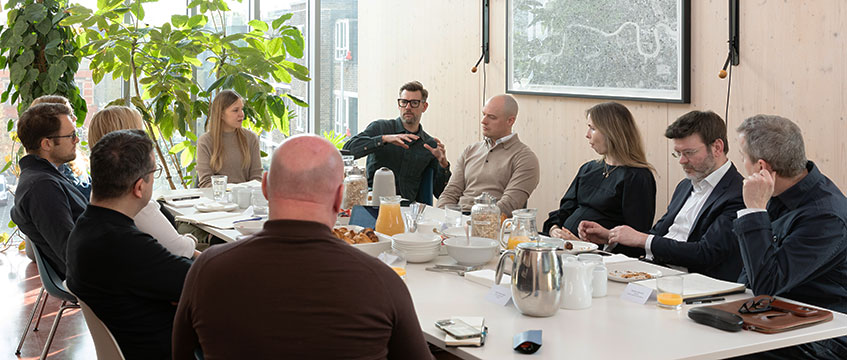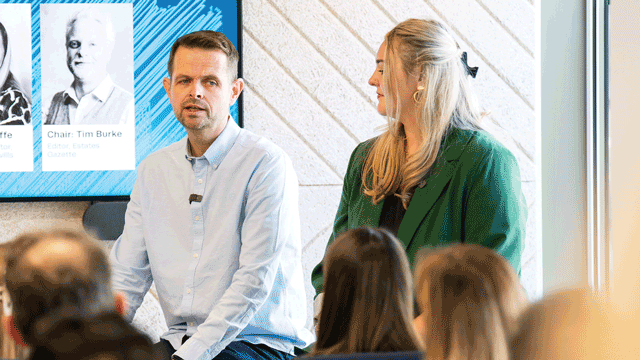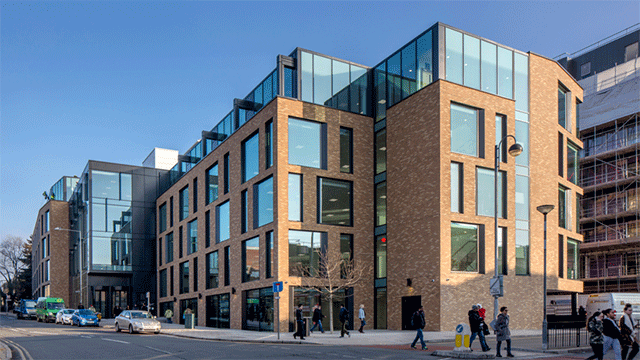A persisting supply-demand imbalance for life sciences-related real estate is forcing developers and occupiers alike to compromise on quality.
Conversion of existing stock has been considered a speedy solution for a long time, especially in urban locations, thanks to its proximity to academia, teaching hospitals, amenities and transport links.
At a roundtable event on the topic of adaptive reuse for life sciences, hosted by structural and civil engineering practice Heyne Tillett Steel and chaired by EG, industry experts said that adapting buildings can also throw up opportunities that developers may not have when they build from scratch.
Stretching conversion criteria
James Morgan, structural engineer at Heyne Tillett Steel, said that adapting buildings for life sciences users, as with many other sector-to-sector conversions, can be either “relatively easy” or “a real struggle”, depending on the building specifications that can or cannot be changed. He said: “We have seen buildings being adapted where the technical challenges were far above what they were originally designed for.”
Giorgio Cardone, associate director at Heyne Tillett Steel, added: “I’ve been working with James for 10 years across life sciences projects and all of that time it has been a learning process around overcoming technical challenges.”
Other guests agreed. Richard Warwick, director at Owers Warwick Architects, said: “With old buildings, you’re tasked to work with the core of the building that’s already there, challenging yourself to make it work regardless of the rules and thinking about the structures you would never have thought about when delivering a new-build lab on a greenfield site.”
Rebecca Thomas, director at Fathom Architects, echoed the view, adding that many lessons can be learnt from the retrofit market, which has seen historical buildings converted into laboratories. She said: “Each project has its own challenges, but they can all be overcome. Each Victorian warehouse, 1990s building and retail park facility has its own place. I think understanding the nature of the building and using it to its best advantage is key in delivering the right real estate for different science occupiers.”
Emily Slupek, partner for project management at Bidwells, added: “Arguably, adapting buildings actually set the precedent for us being able to move the goalposts on new buildings, because I don’t know whether we would ever have questioned some of the briefs that we were absolutely dead set was the right thing to do.
“We started off, probably five to seven years ago, thinking that 4.5m slab-to-slab was a must-have [for a life sciences building], and that anything less than that would not work. However, most recently we have seen 3.8m slab-to-slab working perfectly adequately. It depends on the size of tenant, the science they’re doing and a ton of other factors. What’s exciting about working speculatively, though, is that you don’t know that at the beginning. So it’s about doing the best that you can.”
Send us to the future
Over the past few years, a significant number of redevelopment projects have been delivered to the market, outweighing the number of new purpose-built facilities.
Taking a five- to 10-year step forward in time, the market is expected to rebalance as grade-A stock starts to come out of the ground, creating more choice for life sciences occupiers and putting existing refurbishment projects at risk of remaining empty. As such, with the reuse of buildings, creating a quality product is critical from the developer’s perspective.
Slupek said: “We don’t want to get a whole ton of refurbishment projects that just don’t quite hit the mark because the new ones that are coming through technically work better.”
Rachel Hallam, associate director at Buro Happold, added: “Planning is a big setback when it comes to conversion of historical buildings, and it’s not keeping up with what the researchers need. The research is moving so fast that life sciences occupiers need the space now, and they’re forced to compromise. What we have seen is that those occupiers are likely to vacate the space as soon as better-fit space becomes available.”
Tom French, development, design and construction director for the UK at Longfellow Real Estate Partners, said: “We are challenged to deliver a product now that is resilient for the supply chain that is going to come through in five to 10 years’ time.”
Longfellow, a Boston-founded long-term investor in innovation and science real estate, expanded into the UK through the acquisition of the 42-acre Capital Park in Cambridge for £175m in 2022. The company has rebranded the park as CamLIFE and is actively working on reshaping the campus into a shared research space for the wider community. The first phase of CamLIFE will create 170,000 sq ft of adaptable lab space across three existing 1990s buildings.
Lack of diversity
Rob Beacroft, co-founder and director of Lateral, believes that similarities in specifications across neighbouring developments are increasing the risk of refurbished buildings being left unwanted by occupiers when new developments hit the market. He said: “We do quite a lot of analysis on nearby competing or potentially complementary developments.
“Lots of those developments are under a question mark owing to the economic headwinds we face, lack of funding and planning constraints, but if we all bring forward the same thing then we’re going to end up with buildings that don’t serve the actual requirements of the tenants, today and in the future. That’s a real danger.”
Lateral was established less than five years ago but has already been full-on on the office-to-lab conversion route, having turned around the firm’s first project in Cambridge in less than a month. Lateral and Amazon Property’s £250m fund bought the 31,248 sq ft Mortlock House in June 2022, which was leased to biotech firm Nuclera in August that year.
Since then, Lateral has been working on multiple retrofit projects within the Golden Triangle, with most of them sitting within the urban environment.
Rob Burborough, non-executive science director at Lateral and partner at project manager 3PM, added: “We have realised that we, as a developer, don’t need to provide everything for everyone.”
Fergal Burke, head of masterplanning for White City at Imperial College London, has backed the private sector developer, saying that life sciences clusters across the UK should treat each other as complementary neighbours, not competing developers. He said: “That’s the real core ingredient of creating a successful life sciences ecosystem.”
Photo © Sophie Percival/Heyne Tillett Steel
Send feedback to Evelina Grecenko
Follow Estates Gazette











